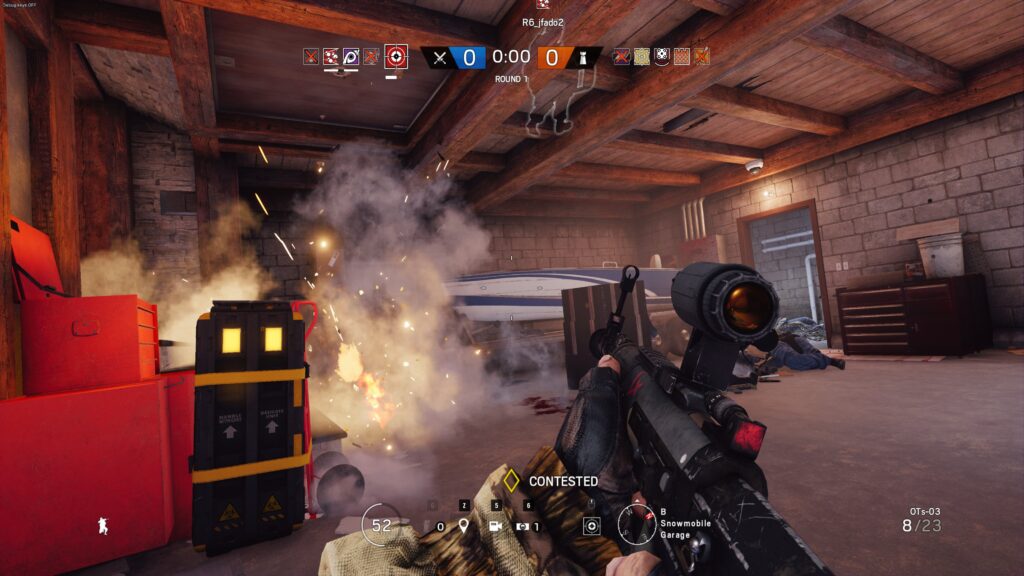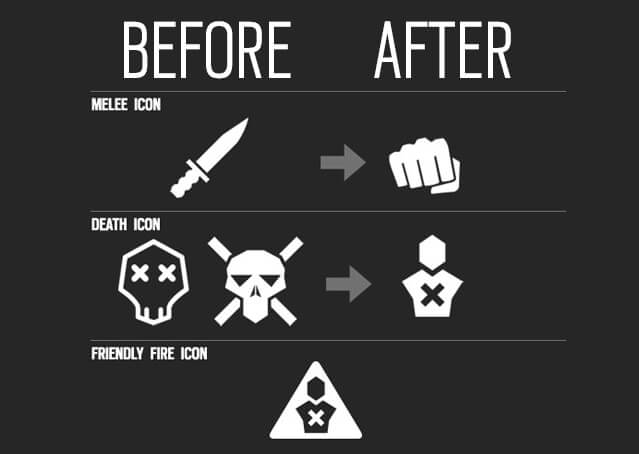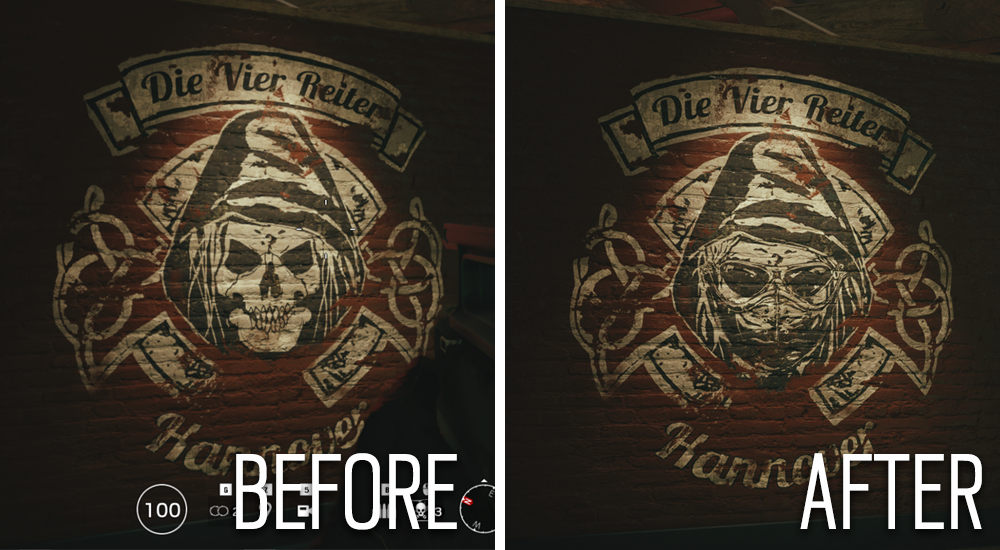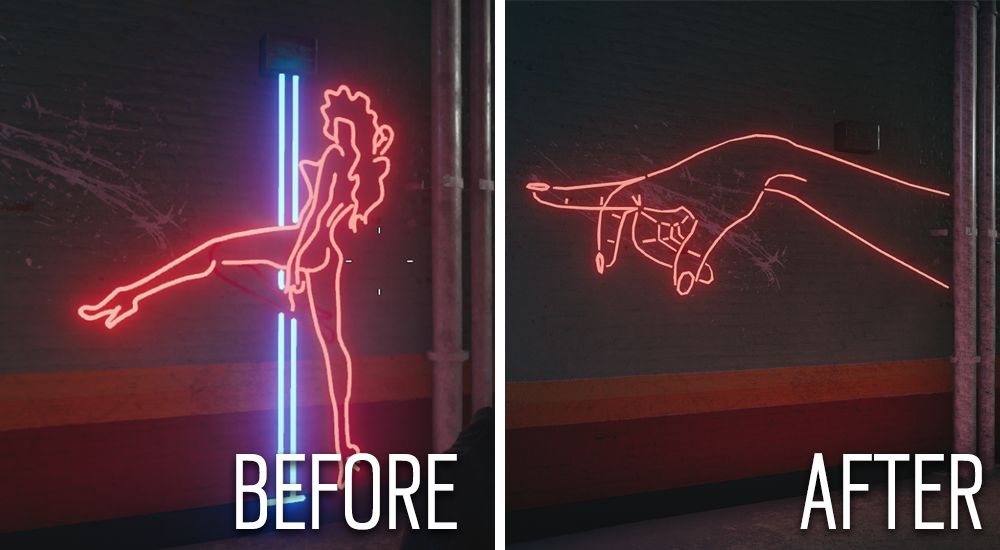
On Friday, Ubisoft announced its hit tactical multiplayer shooter Rainbow Six Siege would see aesthetic “adjustments” to the game’s maps and icons in preparation for the game’s expansion into China. Promising a “single, global version” of Siege, Ubisoft stressed that it would make the design changes to the entire global edition of the game instead of “branching and maintaining two parallel builds” for censored and uncensored content.
Creating one centralized program across various cultures and regions makes sense from a design perspective. Ubisoft wants to “reduce the duplication of work on the development side” and assure its developers address issues as fast as possible across regions by helming one core team behind a single international build. This simultaneously streamlines development and assures there are not multiple different clients and assets that need to be updated every time a new map or patch comes out.
But the changes are pretty extensive. For one, the melee kill icon is changing from a knife to a fist. Death notification skulls are turning into a torso with an “X” on its chest. Skulls are being removed, slot machines will be replaced with beer bottles, and blood on a Chinese painting will be taken away. Sexually explicit material will be changed, too: A neon light showing a stripper wrapped around a pole will disappear, replaced instead by a woman’s index finger arched and pointing forward.

Suffice to say, Ubisoft promises not to change Rainbow Six Siege‘s gameplay, just several key stylistic decisions implemented in the game. But the aesthetic decision is upsetting plenty of players, especially because there won’t even be a global build to accommodate all regions in the end.
“Moving forward, we do recognize and understand that for some elements, it is not possible to have a completely global build,” community manager UbiNoty told Rainbow Six Siege fans on Reddit. “Thus, there will be some things that are split build-wise. While our goal is to maintain as close a parallel as possible between builds, we will also not compromise the core integrity of the gameplay and mechanics as they exist currently.”
GameDaily.biz reached out to Ubisoft for comment but did not receive a response.

There’s a complicated cultural reason behind the upcoming changes, one that needs to be put into perspective in order to understand Ubisoft’s decision. For one, China’s Ministry of Culture and Tourism works together in conjunction with the National Radio and Television Administration to issue permits for foreign games. Earlier this year, China stopped issuing licenses for new video games amid bureaucratic restructuring, Bloomberg reports, with government officials reportedly concerned with depictions of gambling, sex, and violence in video games.
Traditionally speaking, publishers “will often choose to err on the side of caution and cut or edit anything that might be perceived as objectionable” when a game is set to receive its Chinese licensing review, Tech in Asia explains. For instance, while skeletons aren’t necessarily banned in Chinese video games, developers tend to pull them from upcoming titles out of fear that skulls, skeleton enemies, and other depictions will be deemed as disrespectful, slowing a game’s launch in the process. That’s a big deal—China is set to exceed one billion gamers and $42 billion in revenue by 2022, according to a report by Niko Partners.

Meanwhile, sex remains an incredibly personal topic in Chinese culture, and the sheer depiction of sex “can be easily accused of being pornographic,” and “exhibiting, printing, or spreading such kind of works can be risky,” according to artistic expression organization Freemuse. China’s National Radio and Television Administration has a long history with censoring films for “exposing scenes of promiscuity” and “prostitution,” including “sexual acts” or “private body parts,” Freemuse also explains. It’s easy to see why Ubisoft changed the neon stripper in light of China’s history with censoring sexually explicit material. There’s a real historical precedent here, after all.
Ubisoft is a company and it needs to make money. There’s nothing wrong with the company self-censoring its own game for a Chinese build intended for a Chinese audience. But Ubisoft is forcing all regions to accommodate to a specific country’s censorship demands. Remember, when Rainbow Six Siege launched in 2015, players didn’t purchase the multiplayer game expecting key aesthetic changes to be made three years later. That’s setting an uncomfortable precedent, one that prioritizes an efficient asset pipeline over developers’ original artistic intentions. It’s easy to see how these changes could spiral into other Ubisoft multiplayer games, like Tom Clancy’s The Division 2 or The Crew 2.
Centralizing and improving an asset pipeline isn’t just about efficiency, it’s about maintaining a well-rounded game. And though the inevitable conclusion will be split-builds for different regions, unifying the aesthetic in Rainbow Six Siege across regions is both understandable and a bit unnerving.
On the one hand, it frees up developers to work on content that can launch (for the most part) globally, instead of reworking assets in addition to building out content. On the other, it pigeon-holes all regions and cultures into a single way of experiencing the world. Government-imposed censorship exists, in one form or another, in almost every culture. We’re relatively lax about it in the United States (because games like Agony exist), but censorship about violence and sex exist in a number of regions, including the European Union.
Perhaps a sequestered Chinese build would make more sense in the long run. Perhaps not. The solution is a double-edged knife and it’s a heck of a line to walk.
 GameDaily.biz © 2025 | All Rights Reserved.
GameDaily.biz © 2025 | All Rights Reserved.